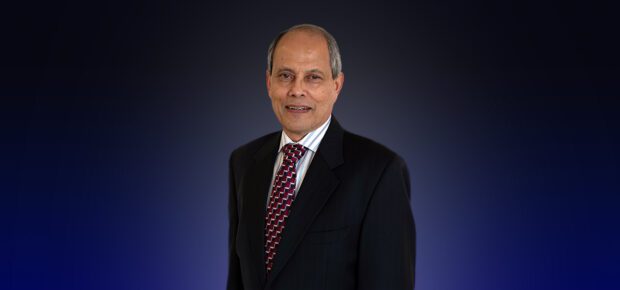November 24, 2025
Many STEM students aren’t content to just write software or design new devices. They want to build a better world. What they lack isn’t passion, but the mentorship and institutional support to turn their ideas into action.
IEEE 2023 President Saifur Rahman meets young people around the world, and he’s noticed that many are driven by a desire to work on projects and for companies that are making the world better. Here, he talks about the ways students and young professionals can position themselves for careers with impact, and how they can inspire the next generation.
What advice would you give to young people interested in making a difference? Is that advice any different for early-career professionals?
Broaden your learning horizon. Don’t confine yourself to the space where you study or work today. Remember that before you are an engineer, doctor, lawyer or social worker, you are a human being. If you are an electrical engineering student or young professional, go beyond your technical specialty. Learn the history and geography of your country. Doing so helps you understand not only what is happening around you, but why it’s happening. Finding sustainable solutions usually depends on understanding the people and places where those solutions will be applied.
Younger students will often look up to you and ask questions about what you do. To explain why you do it, you need perspective. For example, if a child asks why you study electrical engineering, saying you like electronics or power systems isn’t enough. They’ll expect you to connect your interests to how these disciplines evolved over time and how they shape people’s lives.
How can institutions like IEEE encourage students to pursue these opportunities?
IEEE’s tagline is ‘Advancing Technology for Humanity’. This is not just an abstract idea; it is a way of life. IEEE’s work on ‘Technology for a Sustainable Climate’ demonstrates how IEEE can bring together significant expertise to address this challenge
IEEE’s TryEngineering program is also a great avenue to inspire the next generation and a great resource for educators.
How can academic institutions improve the pipeline of students ready to tackle these big issues?
Colleges and universities can encourage faculty in engineering, the physical sciences, and the humanities to visit middle and high schools to discuss their research and how it relates to sustainability. Personal interaction sparks curiosity in ways that digital tools cannot. Meeting a professor in their classroom allows students to ask questions, and maybe it will motivate them to gain more knowledge before going to college.
What can companies that hire young engineers do to improve the pipeline of students interested in sustainability and climate?
Like colleges and universities, companies may also want to send their engineers to middle and high schools to talk about what they do in their daily work, and why they do it. Especially if women engineers go to schools and talk about what they do and how they got to where they are, this will motivate young girls to be interested in engineering.
Many students are eager to solve global challenges, but simple economics and ROI play a big role in the opportunities available to most students. What are the skills and research topics that best position them for these opportunities?
Young people are idealistic. Issues like poverty, lack of healthcare, lack of water or a deteriorating climate bother them very much. They want to solve these problems. They need to be listened to by their teachers and professors. Their professors and teachers can also help them understand the barriers to solving these problems and the factors that delay solutions. These young minds aren’t burdened by experience. They offer innovative solutions that can be starting points for addressing these challenges.
Your dissertation was on nuclear energy. How did your interest in sustainability and climate develop? What was your “Aha” moment?
The topic of my PhD dissertation was optimum refueling of large-scale nuclear reactors. I developed an algorithm to help replace burned-up nuclear fuel rod assemblies during routine refueling operations. As a young assistant professor at Virginia Tech in the 1980s, I started researching whether large-scale wind and solar could replace the capacity of planned nuclear projects that had been shelved over cost concerns. This was in the early 1980s, and at the time, sustainable climate issues weren’t at the forefront. I continued that research for three decades.
In the 2010s, the UN and other multinational organizations began to think about limiting greenhouse gas emissions, especially from coal-fired power plants. I realized that I had been working for many years to promote renewable energy as a replacement for nuclear power. Why not focus on renewables to replace coal-fired plants and help save the planet? This was my “Aha” moment.
Since 2022, I have led the IEEE delegation to the UN Conference on Climate Change, otherwise known as COP. At these conferences, I give talks on the challenges and opportunities to replace coal-fired electricity generation and avoid large volumes of CO2 production. I also talk about the ways the energy transition can help protect biodiversity.
ABOUT OUR AUTHOR
2023 IEEE President and CEO Saifur Rahman, is an IEEE Life Fellow and the founding director of the Advanced Research Institute at Virginia Tech, where he is a professor of electrical engineering. Over the years, he has served IEEE in a number of capacities, including as president of the IEEE Power and Energy Society, and as the founding editor of IEEE Electrification Magazine and IEEE Transactions on Sustainable Energy.





 Meaningful Momentum or Running in Place?
Meaningful Momentum or Running in Place? AI Through Our Ages
AI Through Our Ages Liquid Infrastructure: Our Planet's Most Precious Resource
Liquid Infrastructure: Our Planet's Most Precious Resource The Impact of Technology in 2025
The Impact of Technology in 2025 Quantum and AI: Safeguards or Threats to Cybersecurity?
Quantum and AI: Safeguards or Threats to Cybersecurity? Why AI Can't Live Without Us
Why AI Can't Live Without Us Bits, Bytes, Buildings and Bridges: Digital-Driven Infrastructure
Bits, Bytes, Buildings and Bridges: Digital-Driven Infrastructure Impact of Technology in 2024
Impact of Technology in 2024 Emerging AI Cybersecurity Challenges and Solutions
Emerging AI Cybersecurity Challenges and Solutions The Skies are Unlimited
The Skies are Unlimited Smart Cities 2030: How Tech is Reshaping Urbanscapes
Smart Cities 2030: How Tech is Reshaping Urbanscapes Impact of Technology 2023
Impact of Technology 2023 Cybersecurity for Life-Changing Innovations
Cybersecurity for Life-Changing Innovations Smarter Wearables Healthier Life
Smarter Wearables Healthier Life Infrastructure In Motion
Infrastructure In Motion The Impact of Tech in 2022 and Beyond
The Impact of Tech in 2022 and Beyond Cybersecurity, Technology and Protecting Our World
Cybersecurity, Technology and Protecting Our World How Technology Helps us Understand Our Health and Wellness
How Technology Helps us Understand Our Health and Wellness The Resilience of Humanity
The Resilience of Humanity Harnessing and Sustaining our Natural Resources
Harnessing and Sustaining our Natural Resources Creating Healthy Spaces Through Technology
Creating Healthy Spaces Through Technology Exceptional Infrastructure Challenges, Technology and Humanity
Exceptional Infrastructure Challenges, Technology and Humanity The Global Impact of IEEE's 802 Standards
The Global Impact of IEEE's 802 Standards Scenes of our Cyber Lives: The Security Threats and Technology Solutions Protecting Us
Scenes of our Cyber Lives: The Security Threats and Technology Solutions Protecting Us How Millennial Parents are Embracing Health and Wellness Technologies for Their Generation Alpha Kids
How Millennial Parents are Embracing Health and Wellness Technologies for Their Generation Alpha Kids Space Exploration, Technology and Our Lives
Space Exploration, Technology and Our Lives Global Innovation and the Environment
Global Innovation and the Environment How Technology, Privacy and Security are Changing Each Other (And Us)
How Technology, Privacy and Security are Changing Each Other (And Us) Find us in booth 31506, LVCC South Hall 3 and experience the Technology Moon Walk
Find us in booth 31506, LVCC South Hall 3 and experience the Technology Moon Walk Virtual and Mixed Reality
Virtual and Mixed Reality How Robots are Improving our Health
How Robots are Improving our Health IEEE Experts and the Robots They are Teaching
IEEE Experts and the Robots They are Teaching See how millennial parents around the world see AI impacting the lives of their tech-infused offspring
See how millennial parents around the world see AI impacting the lives of their tech-infused offspring Take the journey from farm to table and learn how IoT will help us reach the rising demand for food production
Take the journey from farm to table and learn how IoT will help us reach the rising demand for food production Watch technical experts discuss the latest cyber threats
Watch technical experts discuss the latest cyber threats Explore how researchers, teachers, explorers, healthcare and medical professionals use immersive technologies
Explore how researchers, teachers, explorers, healthcare and medical professionals use immersive technologies Follow the timeline to see how Generation AI will be impacted by technology
Follow the timeline to see how Generation AI will be impacted by technology Learn how your IoT data can be used by experiencing a day in a connected life
Learn how your IoT data can be used by experiencing a day in a connected life Listen to technical experts discuss the biggest security threats today
Listen to technical experts discuss the biggest security threats today See how tech has influenced and evolved with the Games
See how tech has influenced and evolved with the Games Enter our virtual home to explore the IoT (Internet of Things) technologies
Enter our virtual home to explore the IoT (Internet of Things) technologies Explore an interactive map showcasing exciting innovations in robotics
Explore an interactive map showcasing exciting innovations in robotics Interactively explore A.I. in recent Hollywood movies
Interactively explore A.I. in recent Hollywood movies Get immersed in technologies that will improve patients' lives
Get immersed in technologies that will improve patients' lives